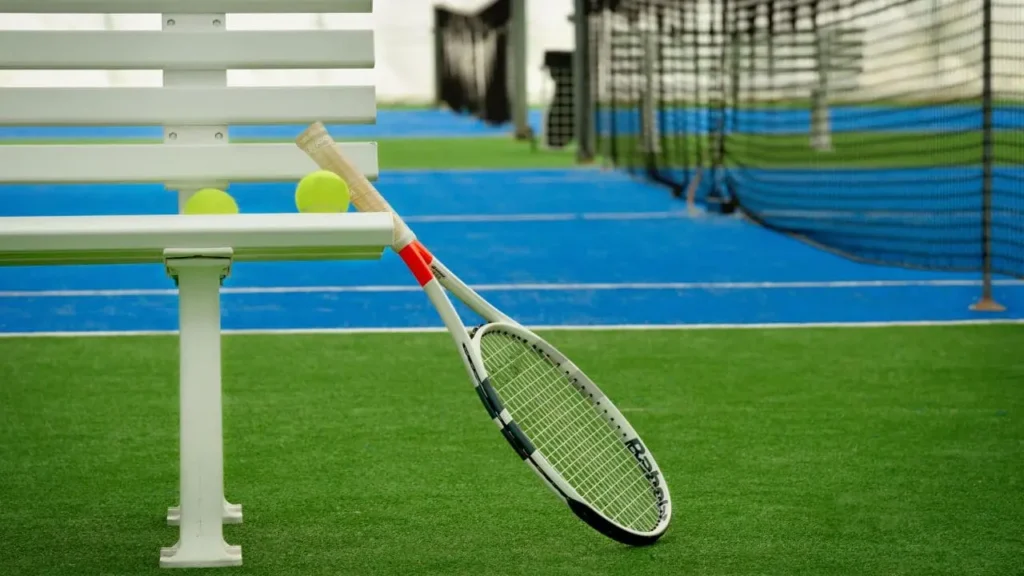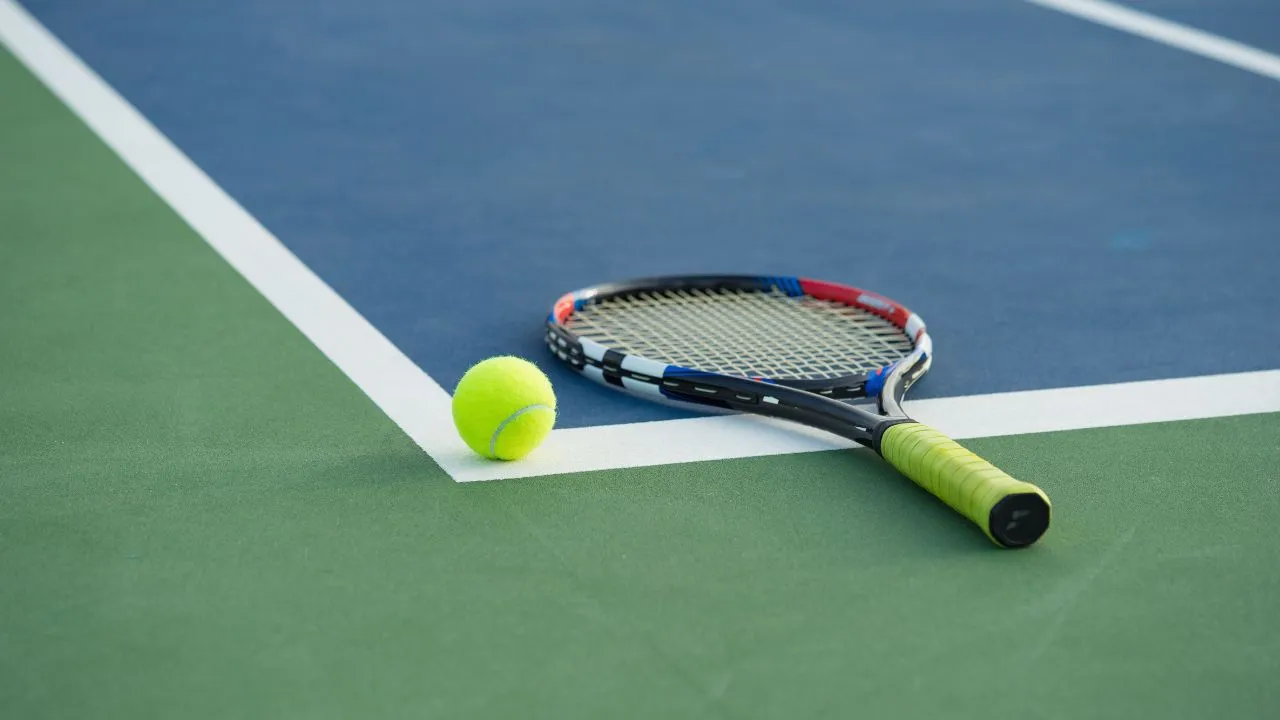The average lifespan of a racket is almost 1 year. Sometimes this lifespan extends to 5 years. The life of a racket depends on how often it is often used and maintained. For frequent players, this life shortens. Because the racket frame will lose its stiffness due to frequent use. There is more chance of wear and tear on the strings and grommets. For casual players, this life expands 1-2 years. But for professional players, it reduces and remains 6-12 months.
Racket’s life also depends on playing style, care, string tension, and court surfaces. When it’s time to replace, look for wear and tear, stiffness loss, and damaged grommets.
Do you know how long the frame of the racket lasts? It lasts almost 10 years. People can play perfect games by the old frame if restrung on time. By restringing, proper storage, and care, you may prolong the life of a tennis racket. Thus, you can experience superior performance on the court for a long period. Focus on the signs that state to replace the racket and factors that prolong life.
Table of Contents
ToggleLifespan of Different Tennis Rackets
The lifespan of a tennis racket depends on various factors, including the frequency of play, playing style, and care of the racket. Here’s a general guideline for both recreational and advanced players:
Types of Racket | Recreational Rackets | Competitive Rackets |
Graphite Rackets | 1-3 years | 1-2 years |
Carbon Fiber Rackets | 2-4 years | 1-2 years |
Aluminum Rackets | 5+ years | 2-5 years |
Kevlar-Composite Rackets | 3-5 years | 1-2 years |
Boron Rackets | 3-5 years | 1-2 years |
Factors That Affect Tennis Racket Lifespan
Some factors like playing frequency, string tension, and surface affect a racket’s life.
More frequent play means more stress on the racket. The racket frame will get less stiff the more often you play.
Power hitters generate a lot of force to hit. It will wear out their rackets faster than players with finesse or control. The more force applied to the racket loses its tension and frame integrity.
High string tension can put extra pressure on the racket frame. Over time, this tension weakens the frame shortening the racket’s lifespan. Regular restringing of the racket also affects its longevity.
Hard courts are more abrasive. They cause the racket to wear faster than softer surfaces like clay or grass. If you’re playing on hard courts, you can face rapid wear and tear.
The material of the racket also impacts its longevity. Rackets made from graphite or carbon fiber are more durable. The cheaper models of aluminum or composite materials are less durable.
Signs to Replace Your Racket
The racket frame develops little cracks or microfractures with time. These cracks affect its stiffness and integrity. A racket with a weakened frame will reduce the power and control in the court.
If you notice a decrease in power, accuracy, or control, it may be serious. The frame could be losing stiffness. It affects the ball’s power to get energy transfer from it.
A racket feels more vibrational or “hollow” when the frame is losing its structure. This can lead to discomfort and can contribute to injuries like tennis elbow.
Grommets can wear out over time. If they are damaged or missing, your strings are more likely to break or lose in tension.
You should get a new racket if strings are breaking more easily after restringing. This might show that your frame is weak or the grommets are dirty.
How to Increase the Life of Your Racket?

It is up to you to prolong the life of your tennis racket. You can extend it by using a racket bag, proper care and avoid hitting the ground. You should avoid the factors that decrease the life of a racket like more use on hard courts.
Regular Restringing
Restring your racket every 3-6 months if you play regularly. Strings lose tension with time. It reduces performance and also puts added stress on the racket’s frame. Strings that are too tight can cause unnecessary pressure on the frame. This leads to quicker wear and replacement. Use string tension that suits your playing style without exceeding suggested limits. Use high-quality strings suitable for your playing style to reduce wear.
Proper Storage
Keeping your racket in good condition requires proper storage. Protect your racket from excess hot or cold places, such as the sun, or inside a car. Because they can deform the frame and harm the strings. Use a protective bag to keep your racket safe from dust, moisture, and temperature changes.
Avoid hitting the Ground
Microfractures can result from constantly hitting the ground and other hard surfaces. Tapping the frame out of irritation can harm the frame. Pay attention to how you grip the racket both during and after a point.
Replace Grommets
Weary grommets might cause damage to your strings and frame. The majority of grommet sets are cheap and simple to replace. So watch their condition to extend the life of your racket.
Regularly inspect your racket for indications of wear and tear, including cracks or dents. Deal with any problems as soon as possible to stop more harm. Check the grommets to avoid frame damage and broken strings.
Use of Multiple Rackets
Using many rackets is good for the racket’s condition. Rotating rackets prevents overuse. It gives each racket enough time to recover from constant play. This technique reduces wear on any single racket. Thus pressure on a single racket also decreases.
When Should You Change Tennis Racket?
You can change your racket even if it’s still suitable for playing. Irrespective of Wear and tear you can change whenever you want. Sometimes you should upgrade for reasons other than wear and tear.
If your skill level and playing style change, you need a racket that suits your strengths. With new models offering improved materials racket technology is advancing. New models offer greater vibration control and more effective energy transmission. Purchasing a new racket might provide you with an edge over the competition.
Older rackets can cause tennis elbow and other diseases if they have lost stiffness. Modern rackets include complex vibration-dampening mechanisms.
Conclusion
Like all sports equipment, a tennis racket’s lifespan depends on various factors. Factors such as usage, playing style, and care have a large impact on the racket’s health. By taking these factors into account you can maintain and set the good life of your racket. It is also viable to use multiple rackets.
Understanding How Long Does Tennis Racket Last is crucial for maintaining performance. It is good to ensure comfort and avoid potential injuries. Casual players may get a few years out of their racket. Frequent or competitive players might need to be replaced within a year.
FAQs
Knowing the signs and causes of tennis racket wearout is crucial. To discuss such factors here are some Frequently Asked Questions:
Regular players should restring their rackets every 3-6 months after. If you play more frequently or notice a drop in performance, you need to restring sooner.
To extend the lifespan, store it properly restring it regularly, and clean the frame after use. Handle it gently by avoiding unnecessary impacts with hard surfaces.
Yes, replacing a worn-out grip ensures better control. It reduces the likelihood of over-gripping, which can put stress on the frame. Replacing the grip often improves comfort and racket condition.
Yes, Grommets and other parts of tennis rackets affect longevity. Worn or damaged grommets can cause premature string breakage. Thus they can damage the racket frame. Replacing grommets when they wear out can help to prolong the racket’s life.
- Visible cracks or fractures in the frame.
- Decreased power or control during play.
- Persistent vibrations or a different feel when hitting the ball.
- Difficulty maintaining string tension.
- Warped or deformed frame shape.

